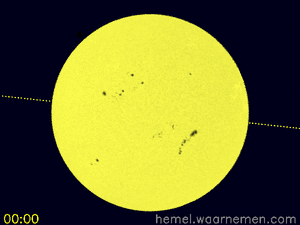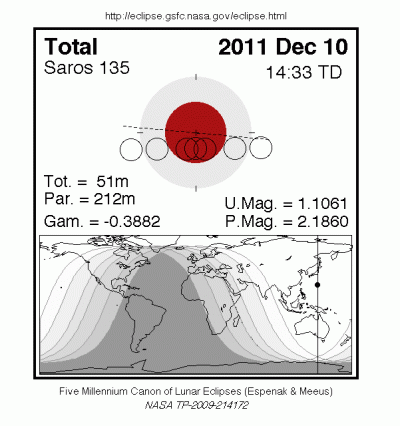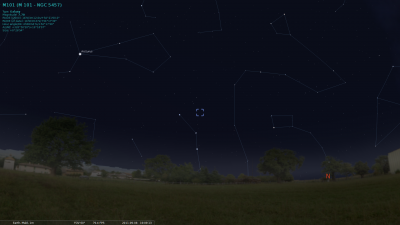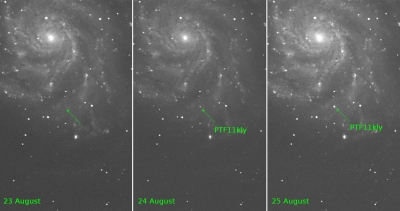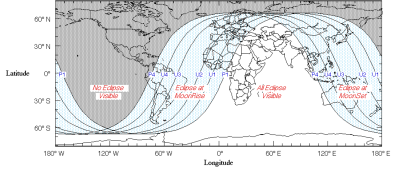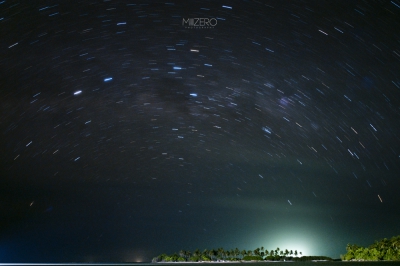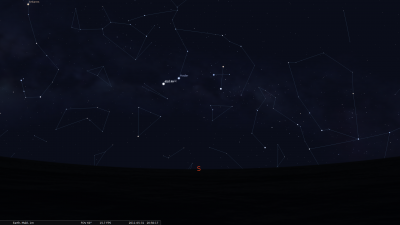Thursday, February 14. 2013
Details on near-Earth asteroid visible in Maldives tomorrow - މާދަމާ ދުނިޔެ ކައިރިޔަށް އަންނަ އެސްޓްރޮއިޑްއާއި ބެހޭ
މާދަމާ (15 ފެބުރުއަރީ) ދުނިޔެއާއި ވަރަށް ކައިރިން އެސްޓްރޮއިޑެއް ދާނެކަމަށް ފަލަކީ އިލްމުވެރިން ބުނަމުންދާތާ ދުވަސް ކޮޅެއްވެއްޖެއެވެ. އަދި މިފަހަރު ކަންދިމާކުރާގޮތުން މިއެސްޓްރޮއިޑް ދިވެހިރާއްޖެއަށްވެސް ފެންނާނެއެވެ. ހަމަ ލޮލުން ފެންނަވަރަށްވުރެ ކުޑަ ތަންކޮޅެއް ފަނޑުކަމުގައިވިޔަސް، ދުރުމީ ނުވަތަ ޓެލެސްކޯޕެއްގެ އެހީގައި ބަލައިލެވޭނެއެވެ.
މިއެސްޓްރޮއިޑް ރާއްޖެއަށް ފެންނަގޮތަށް ފެނުން މައްޗަށް އަރާނީ ގާތްގަޑަކަށް 15 ފެބުރުއަރީގެ 22:00 ޖަހާއިރު ދެކުނުންނެވެ. ނަމަވެސް ފަސޭހައިން ފެންނަފަށަށް އަރާނީ 23:00 އިންފެށިގެންނެވެ. އޭރު ހުންނާނީ ކްރަކްސް ނުވަތަ ސަދަން ކްރޮސް ކޮންސްޓެލޭޝަން ކައިރީގައެވެ. އަދި 16 ފެބުރުއަރީގެ 00:30 އާއި 01:00 އާއި ދެމެދު ހުންނާނީ ވާގޯ އާއި ލިއޯ ކޮންސްޓަލޭޝަން އާއި ދެމެދެވެ. މިވަގުތަކީ މިއެސްޓްރޮއިޑްގެ ދުނިޔެއާއި އެންމެ ކައިރިވާ ވަގުތާއި ކައިރި ވަގުތެއްކަމުން އޭގެ އަލި އެންމެ ގަދަވާނެވެސް ވަގުތު ކޮޅެކެވެ. މިތަކެތި ފަސޭހައިން ހޯދުމަށް ފޯނަށް "ގޫގްލް ސްކައި މެޕް" (އެންޑްރޮއިޑް) ނުވަތަ "ސްޓާ މެޕް" (އައިއޯއެސް) ފަދަ އެޕެއް ބޭނުން ކުރެވިދާނެއެވެ.
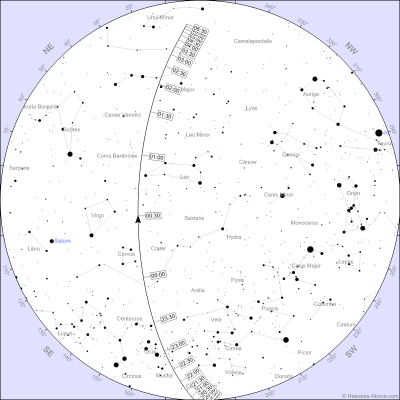
އުޑުމަތިން "2012 DA14" އެސްޓްރޮއިޑްގެ ދަތުރު ފެންނާނެގޮތް – ހެވަންސް އެބަވްއިން

އެސްޓްރޮއިޑް މިހާރު ހުރިތަނުގެ އެންމެ ފަހުގެ މައުލޫމާތު - ނާސާ
"2012 DA14" ގެ ނަންދެވިފައިވާ މިއެސްޓްރޮއިޑަކީ ދުނިޔާއި ގާތުން ދަތުރުކުރާ ދުންތަރިތަކާއި އެސްޓްރޮއިޑްތަކުގެ އާއިލާ ("ނިއާ އާތު އޮބްޖެކްސް") އަށް ނިސްބަތްވާ އެއްޗެކެވެ. މީގެ ބޮޑުމިނަކީ ގާތްގަޑަކަށް 150 ފޫޓެވެ އަދި ބަރުދަނަކީ 130000 މެޓްރިކް ޓަނެވެ. މީތި ފުރަތަމަ ހޯދިފައިވަނީ 23 ފެބުރުއަރީ 2012 ގައެވެ. ހިސާބުތަކަށް ބަލާފައި މި އެސްޓްރޮއިޑް ދުނިޔެއާއި އެންމެ ކައިރިވާނީ 16 ފެބުރުއަރީގެ (ރާއްޖެގަޑިން) 00:24ގައިކަމަށާއި އެވަގުތު އެންމެ ކައިރިވާނީ އިންޑިއާ ކަނޑުން ސުމަޓުރާ ބޭރުން ކަމަށް ސައިންސްވެރިން ވަނީ ވިދާޅުވެފައެވެ. ގައިއަކު 28100 ކިލޯމީޓަރު ނުވަތަ ސިކުންތަކު 7.82 ކިލޯމީޓަރުގެ ބާރު މިނުގައި ދުނިޔެއާއި ދިމާލަށް ދަތުރުކުރަމުންދާ މިއެސްޓްރޮއިޑް ދުނިޔޭގެ ސިސްޓަމް ތެރެއިން ބޭރަށް ދާނީ 16 ފެބުރުއަރީގެ (ރާއްޖެ ގަޑިން) 17:00 ގައެވެ.
މި އެސްޓްރޮއިޑް ދުނިޔެއާއި އެންމެ ކައިރިވާ ވަގުތު މިއެސްޓްރޮއިޑާއި ދުނިޔެއާއި ދެމެދު ދުރުމިނަކަށް ހުންނާނީ އެންމެ 27700 ކިލޯމީޓަރެވެ. މިއީ ދުނިޔޭގެ ވައިގެ ފަށަލައައްވުރެ މާދުރެވެ އަދި ބައިނަލް އަގުވާމީ ޖައްވީ ސްޓޭޝަނައީ ދުނިޔެއާއި ކައިރި ބުރުޖެއްގައިވާ ތަފާތު ސެޓެލައިޓްތަކަށްވުރެވެސް ދުރެވެ. ނަމަވެސް މިއީ ޖީޕީއެސް އަދި ތަފާތު މުވާސަލަތީ ސެޓެލައިޓްތައް ދަތުރުކުރާ "ގިއޯ ސިންކްރޮނަސް އޯބިޓް" އޭ ކިޔާ ބުރުޖައްވުރެ ކައިރިއެވެ އަދި ހަނދަށްވުރެ ގާތްގަޑަކަށް ދިހަބައި ކުޅަ އެއްބައި ކައިރިއެވެ! އެއްވެސް ސެޓެލައިޓެއްގައި މީތި ޖެހުމުގެ ބިރެއް ނެތްކަމަށް ސައިންވެރިން ވަނީ ވިދާޅުވެފައެވެ.
މިބޮޑުމިނުގެ އެސްޓްރޮއިޑެއް ދުނިޔެއާއި މިހާކައިރިވާނެ ކަމަށް މިހާތަނަށް ހޯދިފައިވާ "ނިއާ އާތު އޮބްޖެކްސް"ގެ އަލީގައި ބެލެވޭ ފަހަރަކީ މިއެވެ. މިއެސްޓްރޮއިޑް ބަލަން ރާއްޖޭގެ ހުރިހާ ހިސާބެއްހެން ކަމުދާނެއެވެ. ނަމަވެސް އިރަށްވާ ރަށްތަކަށް ކުޑަކުޑަ މޮޅުކަމެއް ލިބިދާނެއެވެ.
މިފަހަރުގެ މިބައްދަލުވުމުގައި ދުނިޔޭގެ ގްރެވިޓީއާއި ހެދި މީގެ ބުރުޖަށް ބަދަލުތަކެއް އަންނާނެއެވެ. ދެން ދުނިޔެއާއި އެންމެ ކައިރިޔަށް މިއެސްޓްރޮއިޑް އަންނާނީ 15 ފެބުރުއަރީ 2046 ގައެވެ ނަމަވެސް ދަތުރުކުރާނީ މިފަހަރުހާ ގާތަކުން ނޫނެވެ.
ދުނިޔާއި ގާތުން ދަތުރުކުރާ މިފަދަ ތަކެއްޗަކީ ދުނިޔައަށް ނުރައްކާ ހުރި ތަކެތި ކަމުން ސައިންސްވެރިންނާއި ދުނިޔޭގެ ބޮޑެތި ގައުމުތަކުގެ އަސްކަރިއްޔާއިން ބަލަމުން ގެންދެއެވެ. ނަމަވެސް މިފަހަރަކު ދުނިޔެއަށް މާބޮޑު ނުރައްކަލެއް ނެތްކަމަށް އެތީގެ ބުރުޖާއި ސުޕީޑާއި ތަފާތު ކަންކަމަށް ބެލުމަށްފަހު ސައިންސްވެރިންވަނީ ޔަގީންކަން ދީފައެވެ.
ދުންތަރިއާއި އެސްޓްރޮއިޑަކީ ތަފާތު ދެއެއްޗެކެވެ. މިދެއެއްޗަކީވެސް ފަޒާގެ ތެރޭގައި ދަތުރުކުރަމުންދާ އެއްޗެއްކަމުގައިވިޔަސް އެސްޓްރޮއިޑަކީ މައިގަނޑު ގޮތެއްގައި ގަލެވެ އަދި ދުންތަރިއަކީ މައިގަނޑު ގޮތެއްގައި ގަނޑުވެފައިވާ ތަފާތު ގޭހައި ފެނެވެ. އަހަރެމެންގެ ސޯލާސިސްޓަމްގައިވާ ހުރިހާ ދުނިޔެތަކެއް ފަދައިން މިސޯލާސިސްޓަމްގެ ތެރޭގައިވާ އެސްޓްރޮއިޑްތައްވެސް ދައުރުކުރަނީ އިރުގެ ގްރެވިޓީގެ ބާރާއި ހެދި ހަމަ އަހަރެމެންގެ އިރުވަށައެވެ. އެހެނިހެން ދުނިޔެތަކުގެ ގްރެވިޓީގެ ބާރާއި ހެދި އެތަކެތީގެ ބުރުޖަށް އަންނަ ބަދަލުތަކާއި ހެދި ބައެއް އެސްޓްރޮއިޑާއި ދުންތަރި ދުނިޔޭގެ ބުރުޖާއި ކައިރިވެ އަދި ބައެއް ފަހަރު ދުނިޔެއާއި ޖެހި މުޑިއަރައެވެ. މިގޮތަށް މުޑި އެރުމަކީ އަހަރެމެންނާއި ދުނިޔޭގައިވާ ދިރުމަށް ހުރި ބޮޑު ނުރައްކަލެކެވެ. ދުނިޔޭގައި އިންސާނުންގެ ކުރިން އުޅުނު ބިޔަ ޖަނަވާރުތަކެއްކަމުގައިވާ ޑައިނަސޯތައް ނެތި ދިޔައީ ވަރަށް ބޮޑު އެސްޓްރޮއިޑެއްގެ ސަބަބުންކަމަށް ސައިންސްގެ އަލީގައި އެނގެއެވެ.
މިއެސްޓްރޮއިޑް ރާއްޖެއަށް ފެންނަގޮތަށް ފެނުން މައްޗަށް އަރާނީ ގާތްގަޑަކަށް 15 ފެބުރުއަރީގެ 22:00 ޖަހާއިރު ދެކުނުންނެވެ. ނަމަވެސް ފަސޭހައިން ފެންނަފަށަށް އަރާނީ 23:00 އިންފެށިގެންނެވެ. އޭރު ހުންނާނީ ކްރަކްސް ނުވަތަ ސަދަން ކްރޮސް ކޮންސްޓެލޭޝަން ކައިރީގައެވެ. އަދި 16 ފެބުރުއަރީގެ 00:30 އާއި 01:00 އާއި ދެމެދު ހުންނާނީ ވާގޯ އާއި ލިއޯ ކޮންސްޓަލޭޝަން އާއި ދެމެދެވެ. މިވަގުތަކީ މިއެސްޓްރޮއިޑްގެ ދުނިޔެއާއި އެންމެ ކައިރިވާ ވަގުތާއި ކައިރި ވަގުތެއްކަމުން އޭގެ އަލި އެންމެ ގަދަވާނެވެސް ވަގުތު ކޮޅެކެވެ. މިތަކެތި ފަސޭހައިން ހޯދުމަށް ފޯނަށް "ގޫގްލް ސްކައި މެޕް" (އެންޑްރޮއިޑް) ނުވަތަ "ސްޓާ މެޕް" (އައިއޯއެސް) ފަދަ އެޕެއް ބޭނުން ކުރެވިދާނެއެވެ.

އުޑުމަތިން "2012 DA14" އެސްޓްރޮއިޑްގެ ދަތުރު ފެންނާނެގޮތް – ހެވަންސް އެބަވްއިން

އެސްޓްރޮއިޑް މިހާރު ހުރިތަނުގެ އެންމެ ފަހުގެ މައުލޫމާތު - ނާސާ
"2012 DA14" ގެ ނަންދެވިފައިވާ މިއެސްޓްރޮއިޑަކީ ދުނިޔާއި ގާތުން ދަތުރުކުރާ ދުންތަރިތަކާއި އެސްޓްރޮއިޑްތަކުގެ އާއިލާ ("ނިއާ އާތު އޮބްޖެކްސް") އަށް ނިސްބަތްވާ އެއްޗެކެވެ. މީގެ ބޮޑުމިނަކީ ގާތްގަޑަކަށް 150 ފޫޓެވެ އަދި ބަރުދަނަކީ 130000 މެޓްރިކް ޓަނެވެ. މީތި ފުރަތަމަ ހޯދިފައިވަނީ 23 ފެބުރުއަރީ 2012 ގައެވެ. ހިސާބުތަކަށް ބަލާފައި މި އެސްޓްރޮއިޑް ދުނިޔެއާއި އެންމެ ކައިރިވާނީ 16 ފެބުރުއަރީގެ (ރާއްޖެގަޑިން) 00:24ގައިކަމަށާއި އެވަގުތު އެންމެ ކައިރިވާނީ އިންޑިއާ ކަނޑުން ސުމަޓުރާ ބޭރުން ކަމަށް ސައިންސްވެރިން ވަނީ ވިދާޅުވެފައެވެ. ގައިއަކު 28100 ކިލޯމީޓަރު ނުވަތަ ސިކުންތަކު 7.82 ކިލޯމީޓަރުގެ ބާރު މިނުގައި ދުނިޔެއާއި ދިމާލަށް ދަތުރުކުރަމުންދާ މިއެސްޓްރޮއިޑް ދުނިޔޭގެ ސިސްޓަމް ތެރެއިން ބޭރަށް ދާނީ 16 ފެބުރުއަރީގެ (ރާއްޖެ ގަޑިން) 17:00 ގައެވެ.
މި އެސްޓްރޮއިޑް ދުނިޔެއާއި އެންމެ ކައިރިވާ ވަގުތު މިއެސްޓްރޮއިޑާއި ދުނިޔެއާއި ދެމެދު ދުރުމިނަކަށް ހުންނާނީ އެންމެ 27700 ކިލޯމީޓަރެވެ. މިއީ ދުނިޔޭގެ ވައިގެ ފަށަލައައްވުރެ މާދުރެވެ އަދި ބައިނަލް އަގުވާމީ ޖައްވީ ސްޓޭޝަނައީ ދުނިޔެއާއި ކައިރި ބުރުޖެއްގައިވާ ތަފާތު ސެޓެލައިޓްތަކަށްވުރެވެސް ދުރެވެ. ނަމަވެސް މިއީ ޖީޕީއެސް އަދި ތަފާތު މުވާސަލަތީ ސެޓެލައިޓްތައް ދަތުރުކުރާ "ގިއޯ ސިންކްރޮނަސް އޯބިޓް" އޭ ކިޔާ ބުރުޖައްވުރެ ކައިރިއެވެ އަދި ހަނދަށްވުރެ ގާތްގަޑަކަށް ދިހަބައި ކުޅަ އެއްބައި ކައިރިއެވެ! އެއްވެސް ސެޓެލައިޓެއްގައި މީތި ޖެހުމުގެ ބިރެއް ނެތްކަމަށް ސައިންވެރިން ވަނީ ވިދާޅުވެފައެވެ.
މިބޮޑުމިނުގެ އެސްޓްރޮއިޑެއް ދުނިޔެއާއި މިހާކައިރިވާނެ ކަމަށް މިހާތަނަށް ހޯދިފައިވާ "ނިއާ އާތު އޮބްޖެކްސް"ގެ އަލީގައި ބެލެވޭ ފަހަރަކީ މިއެވެ. މިއެސްޓްރޮއިޑް ބަލަން ރާއްޖޭގެ ހުރިހާ ހިސާބެއްހެން ކަމުދާނެއެވެ. ނަމަވެސް އިރަށްވާ ރަށްތަކަށް ކުޑަކުޑަ މޮޅުކަމެއް ލިބިދާނެއެވެ.
މިފަހަރުގެ މިބައްދަލުވުމުގައި ދުނިޔޭގެ ގްރެވިޓީއާއި ހެދި މީގެ ބުރުޖަށް ބަދަލުތަކެއް އަންނާނެއެވެ. ދެން ދުނިޔެއާއި އެންމެ ކައިރިޔަށް މިއެސްޓްރޮއިޑް އަންނާނީ 15 ފެބުރުއަރީ 2046 ގައެވެ ނަމަވެސް ދަތުރުކުރާނީ މިފަހަރުހާ ގާތަކުން ނޫނެވެ.
ދުނިޔާއި ގާތުން ދަތުރުކުރާ މިފަދަ ތަކެއްޗަކީ ދުނިޔައަށް ނުރައްކާ ހުރި ތަކެތި ކަމުން ސައިންސްވެރިންނާއި ދުނިޔޭގެ ބޮޑެތި ގައުމުތަކުގެ އަސްކަރިއްޔާއިން ބަލަމުން ގެންދެއެވެ. ނަމަވެސް މިފަހަރަކު ދުނިޔެއަށް މާބޮޑު ނުރައްކަލެއް ނެތްކަމަށް އެތީގެ ބުރުޖާއި ސުޕީޑާއި ތަފާތު ކަންކަމަށް ބެލުމަށްފަހު ސައިންސްވެރިންވަނީ ޔަގީންކަން ދީފައެވެ.
ދުންތަރިއާއި އެސްޓްރޮއިޑަކީ ތަފާތު ދެއެއްޗެކެވެ. މިދެއެއްޗަކީވެސް ފަޒާގެ ތެރޭގައި ދަތުރުކުރަމުންދާ އެއްޗެއްކަމުގައިވިޔަސް އެސްޓްރޮއިޑަކީ މައިގަނޑު ގޮތެއްގައި ގަލެވެ އަދި ދުންތަރިއަކީ މައިގަނޑު ގޮތެއްގައި ގަނޑުވެފައިވާ ތަފާތު ގޭހައި ފެނެވެ. އަހަރެމެންގެ ސޯލާސިސްޓަމްގައިވާ ހުރިހާ ދުނިޔެތަކެއް ފަދައިން މިސޯލާސިސްޓަމްގެ ތެރޭގައިވާ އެސްޓްރޮއިޑްތައްވެސް ދައުރުކުރަނީ އިރުގެ ގްރެވިޓީގެ ބާރާއި ހެދި ހަމަ އަހަރެމެންގެ އިރުވަށައެވެ. އެހެނިހެން ދުނިޔެތަކުގެ ގްރެވިޓީގެ ބާރާއި ހެދި އެތަކެތީގެ ބުރުޖަށް އަންނަ ބަދަލުތަކާއި ހެދި ބައެއް އެސްޓްރޮއިޑާއި ދުންތަރި ދުނިޔޭގެ ބުރުޖާއި ކައިރިވެ އަދި ބައެއް ފަހަރު ދުނިޔެއާއި ޖެހި މުޑިއަރައެވެ. މިގޮތަށް މުޑި އެރުމަކީ އަހަރެމެންނާއި ދުނިޔޭގައިވާ ދިރުމަށް ހުރި ބޮޑު ނުރައްކަލެކެވެ. ދުނިޔޭގައި އިންސާނުންގެ ކުރިން އުޅުނު ބިޔަ ޖަނަވާރުތަކެއްކަމުގައިވާ ޑައިނަސޯތައް ނެތި ދިޔައީ ވަރަށް ބޮޑު އެސްޓްރޮއިޑެއްގެ ސަބަބުންކަމަށް ސައިންސްގެ އަލީގައި އެނގެއެވެ.


